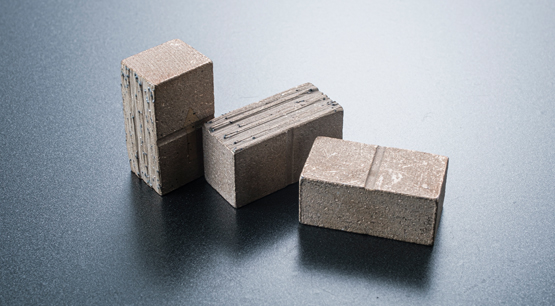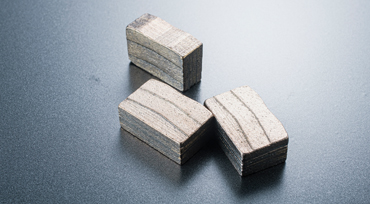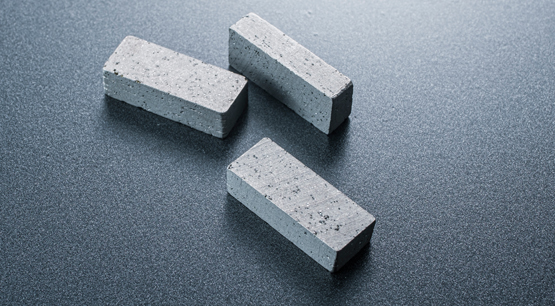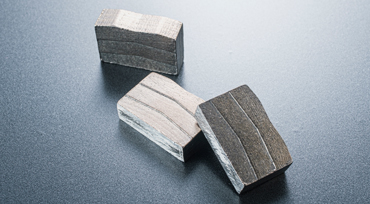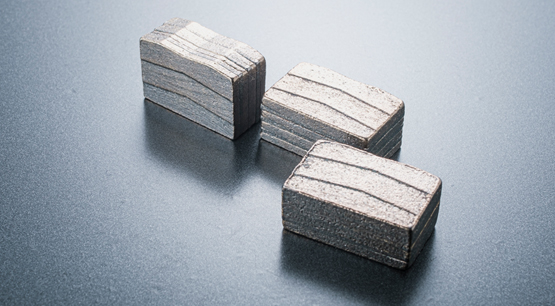The copper-bond diamond segment is a kind of copper powder as the main metal powder raw material, which is sintered in a graphite abrasive tool through high temperature and high pressure to form diamond segments. Such segment is achieved by solid-phase sintering and liquid-phase sintering through metal powders, skeleton materials and some binders. The continuous penetration of metal atoms and compound molecules results in a metal segment with a metallic appearance, higher strength and grinding ability.
The difference between the copper-bond diamond segment and other diamond segments is that more copper powder will be added to this segment. In the final formed segments, most of the metal alloys produced, the alloy of copper element occupies a large component, Copper alloy has the characteristics of strong stability, strong oxidation resistance, moderate hardness and general wear resistance. These characteristics determine that the copper-bond segment can only cut medium-hard or soft stone.Because once the hard stone is cut, the copper-bond segment is prone to consume too fast, or the cutter head is not very wear-resistant, so that the stone cannot be cut.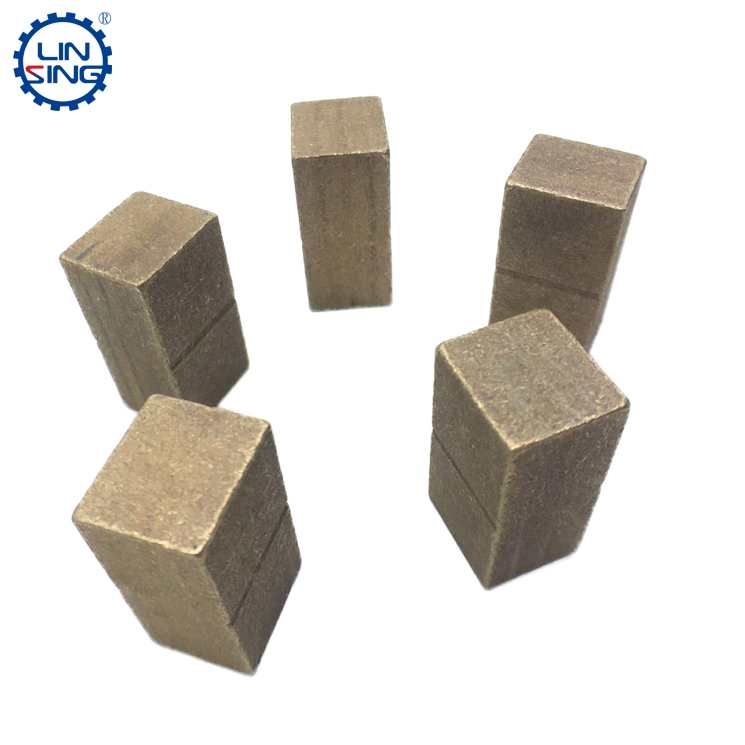
Of course, some copper-bond segments will add two metals, copper powder and iron powder, and the proportion of copper powder of these two metals will be slightly higher than that of iron powder. The base material of the segment is based on the common sense that which metal content is more, which side is biased, although such a segment has also called a copper-bond segment, But with enough iron powder to support, with the addition of iron powder, if a little nickel powder and tungsten powder are added, the alloy material Fe-Ni-Cu-W with good impact resistance and higher wear resistance can be formed. This alloy can exhibit different hardnesses with different proportions, and the change in hardness directly affects the cutting performance of the segment.
The two copper-bond segments with low iron content and high iron content have completely different cutting results due to the different compositions of the segments, as well as welding methods and effects.
Let’s talk about the first kind of segment, the segment with low iron content or full copper powder, this kind of segment has a large copper powder content, Therefore, in the welding process, do not use all-copper brazing tabs for welding. The copper-bond segment and brazing tab cannot form a strong welding firmness, and even the same metal will be rejected during the welding process. Even if the segment is barely welded to the base of the saw blade, the welding will be weak, the welding seam is too large, and the welding time is too long. This copper-bond segment is more suitable for welding with solder pieces with higher silver content. For example, solder pieces with a silver content of more than 35% can complete the welding work well. The copper-bond segment is firmly welded to the base body, but the price of this kind of welding piece will be very expensive due to the high silver content, which will increase the welding cost in the end.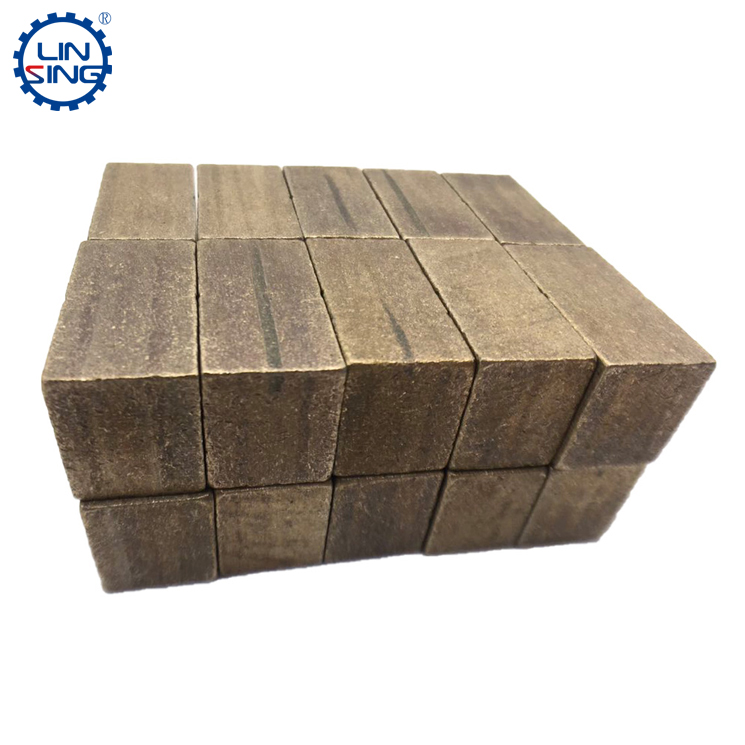
The second type of copper-bond segment belongs to the copper-bond segment with a high content of iron powder. This kind of segment can be welded with a copper welding piece. But there are also the same problems, the problem of welding firmness and welding time. In fact, it is better to use a silver welding piece with a silver content of 18-25% for welding, which can not only appropriately reduce the welding cost, but also reduce the welding cost. It can ensure the welding strength and shorten the welding time, thereby reducing the accident rate of welding.

Can copper-bond diamond segments be welded?
Publish date:2022-07-14 16:45:37 Article From:Linsing Diamond Tools Clicks:



